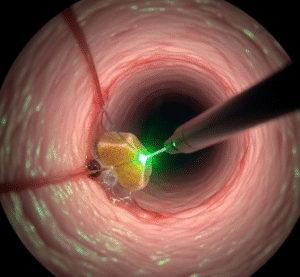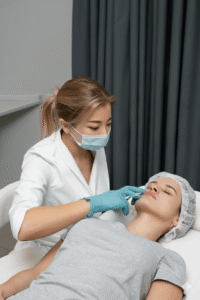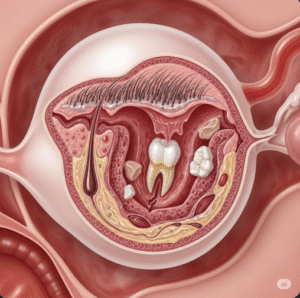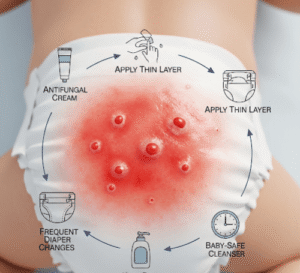Overview
Pulpotomy is a dental procedure performed primarily on primary (baby) teeth to remove diseased or inflamed pulp from the crown portion of the tooth, while leaving the healthy root pulp intact. The goal is to relieve pain, maintain tooth structure, and preserve the tooth until natural exfoliation.
South Korea is known for advanced pediatric dental care, modern endodontic technology, and highly skilled dentists, making it a safe and effective destination for pulpotomy procedures.
What is Pulpotomy?
Pulpotomy involves the removal of the diseased pulp tissue from the crown portion of a tooth while keeping the root pulp intact to maintain vitality. Key points include:
✔ Targeted treatment: Only the affected pulp is removed, preserving healthy tissue.
➔ Minimally invasive: Avoids complete removal of the tooth pulp.
● Temporary or permanent filling placed after pulp removal to protect the tooth.
★ Commonly performed in children to maintain primary teeth and proper alignment for permanent teeth.
Pulpotomy is typically indicated for pulp exposure due to deep caries, trauma, or reversible pulpitis.
What are the Benefits?
Pulpotomy provides several advantages:
✔ Relieves pain and infection associated with pulp inflammation.
➔ Preserves natural tooth structure and promotes normal oral development.
● Minimally invasive compared to pulpectomy or extraction.
★ Maintains proper spacing for permanent teeth, preventing future orthodontic issues.
➤ Quick procedure often completed in a single dental visit.
Procedure Details
1) How should I prepare for Pulpotomy?
Preparation ensures safety and optimal outcomes:
✔ Dental examination: X-rays and clinical evaluation to assess pulp condition.
➔ Medical history review: Identify allergies, medications, or systemic conditions.
● Oral hygiene: Clean teeth prior to the procedure.
★ Patient counseling: Explain procedure, benefits, potential risks, and post-operative care.
➤ Pain management planning: Local anesthesia is used; sedation may be considered for anxious children.
2) What happens during the procedure Pulpotomy?
Pulpotomy is performed under local anesthesia in a dental clinic:
✔ Anesthesia administration: Numbs the affected tooth and surrounding area.
➔ Access opening: Dentist removes decayed portion to expose the pulp chamber.
● Crown pulp removal: Inflamed or infected pulp in the crown is carefully removed.
★ Disinfection and dressing: Root pulp remains intact; medicament applied to preserve vitality.
➤ Filling and restoration: Tooth sealed with temporary or permanent filling, often a stainless steel crown for durability in children.
Korean dentists often use magnification, rotary instruments, and digital imaging for precision and safety.
3) What happens after Pulpotomy?
Post-procedure care focuses on healing, comfort, and maintaining tooth function:
✔ Pain management: Mild discomfort treated with over-the-counter analgesics.
➔ Oral hygiene: Gentle brushing; avoid biting hard foods initially.
● Diet: Soft foods recommended for the first 24 hours.
★ Follow-up: Dentist monitors healing, pulp vitality, and restoration integrity.
➤ Further treatment: If symptoms persist, pulpectomy or extraction may be required.
Risks / Benefits
Possible Risks:
✔ Mild post-operative pain or sensitivity
➔ Temporary inflammation or discomfort
● Failure to maintain pulp vitality, requiring further treatment
★ Infection if procedure is incomplete or contaminated
➤ Fracture of restored tooth in some cases
Major Benefits:
✔ Relieves pain and removes inflamed pulp from the crown
➔ Preserves healthy root pulp and natural tooth structure
● Maintains proper spacing and development in children
★ Minimally invasive, usually completed in a single visit
➤ Promotes long-term oral health and proper eruption of permanent teeth
Recovery and Outlook
✔ Immediate recovery: Children can usually resume normal activity after anesthesia wears off.
➔ Mild discomfort: Pain or tenderness may last 1–2 days.
● Diet: Soft foods recommended; avoid chewing hard foods on treated tooth.
★ Follow-up: Regular dental visits ensure healing and vitality of the tooth.
➤ Long-term outcome: Most pulpotomy procedures successfully maintain tooth function until natural exfoliation, reducing need for extraction.
When To Call the Doctor
Contact your dentist immediately if you notice:
✔ Severe or worsening pain
➔ Swelling, pus, or signs of infection
● Tooth discoloration or unusual mobility
★ Fracture or damage to the tooth
➤ Fever or other systemic symptoms
Best Korea Option / Process
South Korea provides expert pulpotomy care with:
✔ Leading dental hospitals: Seoul National University Dental Hospital, Samsung Medical Center Dental Clinic, Yonsei Severance Dental Hospital.
➔ Advanced pediatric dental equipment: Magnification, rotary instruments, and digital imaging.
● Experienced pediatric dentists: Skilled in pulpotomy and other pediatric endodontic procedures.
★ Comprehensive care: Pain management, restoration, and follow-up monitoring.
➤ Medical tourism support: Translation, travel coordination, and continuity of care for international patients.
✅ Highlights:
✔ Pulpotomy removes inflamed pulp from the crown while preserving root pulp
➔ Relieves pain and maintains natural tooth structure
● Minimally invasive, usually completed in a single visit
★ Risks include mild discomfort, infection, or failure requiring further treatment
➤ Korean dental hospitals provide advanced tools, expert pediatric dentists, and thorough post-operative care













